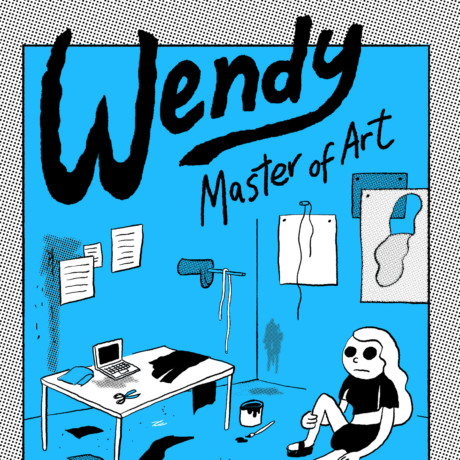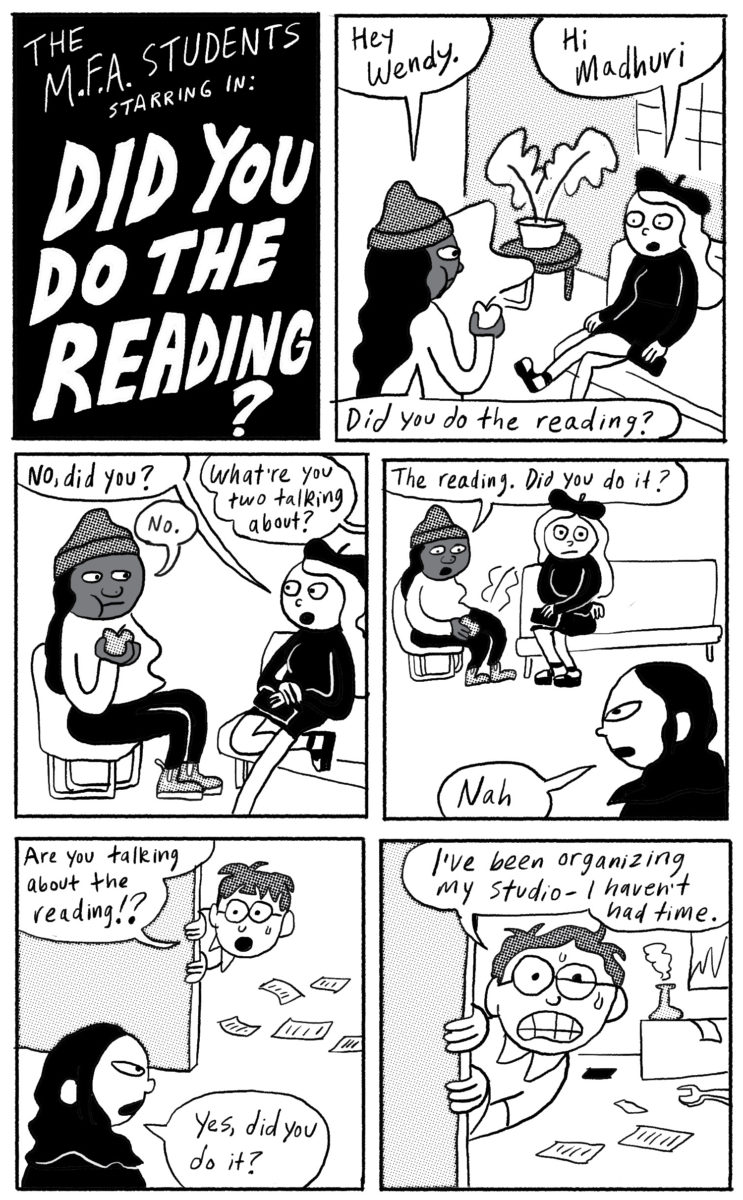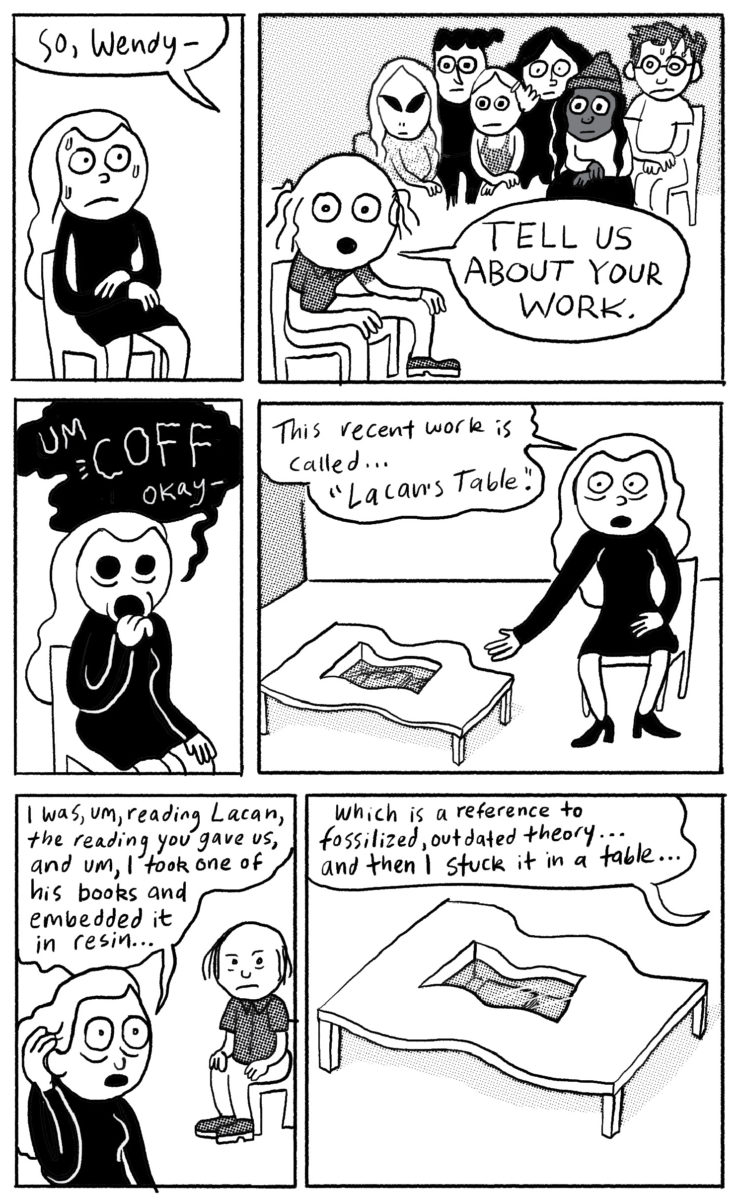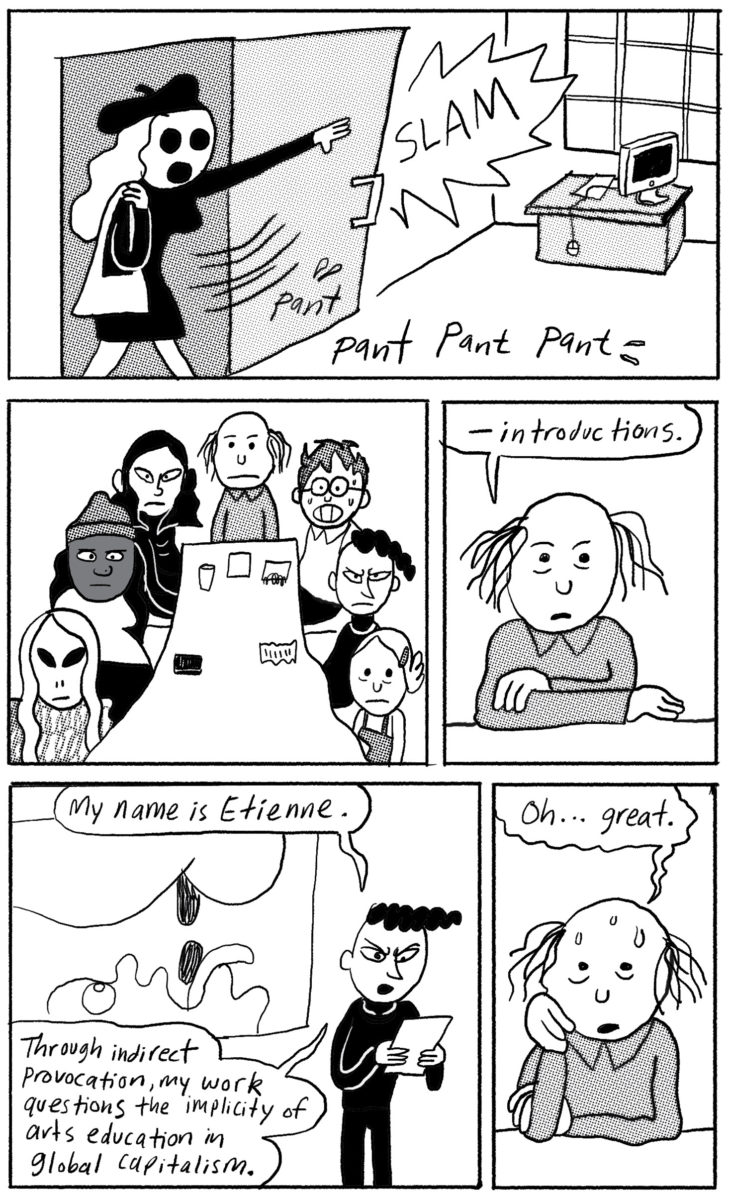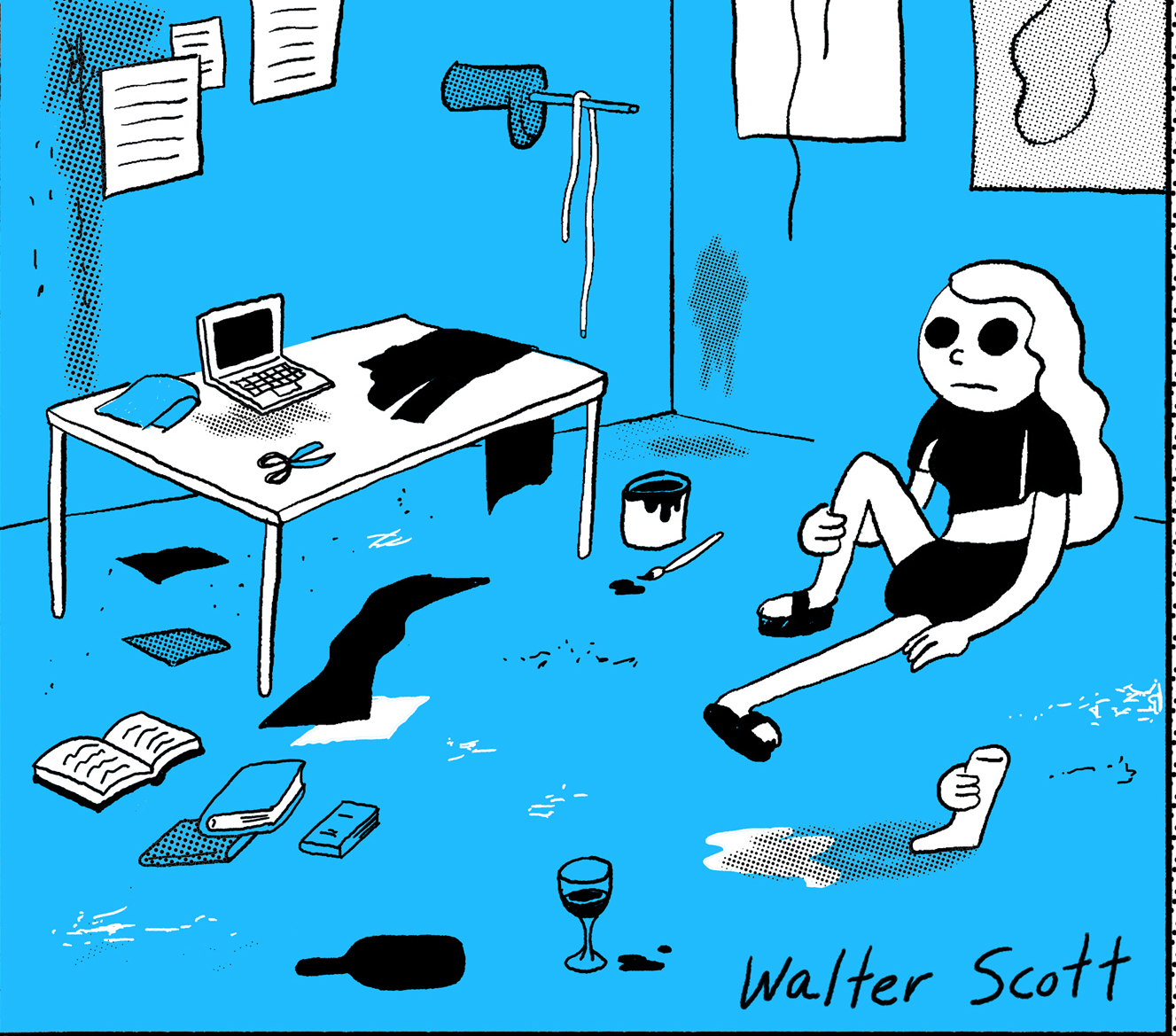
I’d wager that most former or current art school students have been a little bit “Wendy”. The crippling self-doubt, the drinking to forget that self-doubt, the falling for people you probably shouldn’t, the bluffing your way through things by attempting to throw pretentious clichés at the situation. The titular character of Walter Scott’s latest graphic novel is brilliant and flawed. In fact, she’s brilliant because she’s flawed. She’s utterly relatable, even if it makes some squeamish to acknowledge that. In Wendy: Master of Art, our protagonist embarks on her MA art programme in the Ontario town fittingly named (in the case of this book), Hell.
Her course mates are a mixture of millennial cliches. There’s a performative virtue-signalling dude who supposes himself “woke”, but negates any true sense of empathy: “My work seeks to propagate systemic qualities of erasure in non-human logic”, he says by means of introduction to his class. The suspiciously successful Maya is constantly jetting off around the world showing her art (she “has a forthcoming introspective” at the ICA Philadelphia) has a forthcoming, despite any discernible evidence that she does any work.
- Wendy: Master of Art, by Walter Scott
“The crippling self-doubt, the drinking to forget that self-doubt, the falling for people you probably shouldn’t”
There is a character who manages to wring endless art-waffle out of a practice that focuses almost entirely on string; Yunji describes herself and her work as “interested in the semiotics of pissing; I’m also thinking about really long string. It’s crazy how long it can get.” The character who emerges as wholly likeable and lovely is Madhuri, a no-nonsense girl constantly offering around kefir and kombucha, and whose work is “an intersection of fermentation, poetry and painting”.
Fan’s of Scott’s Wendy will have seen her embarking on similar (mis)adventures, in her loose goal of becoming a contemporary art star, in cartoons for publications including The New Yorker website, Hazlitt and the Best American Comics Anthology (a recent comic provides a brilliant satire on the art world post-Covid-19). In these stories, she’s mostly been drinking and partying, looking on in awe and envy as her friends seem to be increasingly, effortlessly “making it” in the art world. Now, she’s enrolled in her MFA, as she puts it, “cuz my art practice is all over the place. And I wanna figure out what’s important to me.”
- Wendy: Master of Art, by Walter Scott
- Wendy: Master of Art, by Walter Scott
And while she’s in no danger of entirely getting her shit together, in Wendy: Master of Art the protagonist certainly does a lot of growing up. People are starting to recognise her at openings, for instance, and as her course’s teaching placement goes on, she realises that it’s unwise but challenging to turn up at school hungover, and that the “good” students can be the absolute worst.
Throughout the book’s wry, playful satire of higher education and art world nonsense, we see Wendy traverse her frequently strained relationships with the assorted bunch, as well as with a man who she knows from the start to be unavailable in many ways. Her negotiations of such relationships with both people and her own art practice (the toughest relationship of the lot) are frequently lubricated (and derailed) by alcohol and sabotaged by ill-advised late nights. As such, Scott’s portrayal of Wendy is more tender than it is snide, as is his economic drawing style that delights in cartoonish proportions and purely black and white panels. There are so many tiny moments that he packs with humour, dropping in band names like “Slut Hut” and “Piss Pants”. As Wendy swipes through dating app “Flopr”, Madhuri’s swiping dismissals are verbalised as an increasingly twenty-first century list of no-nos: “fedora”, “incel”, “manipulative pansexual.”
“What sets Wendy: Master of Art apart is that, for all its caricatured millennial tendencies, it’s so searingly realistic”
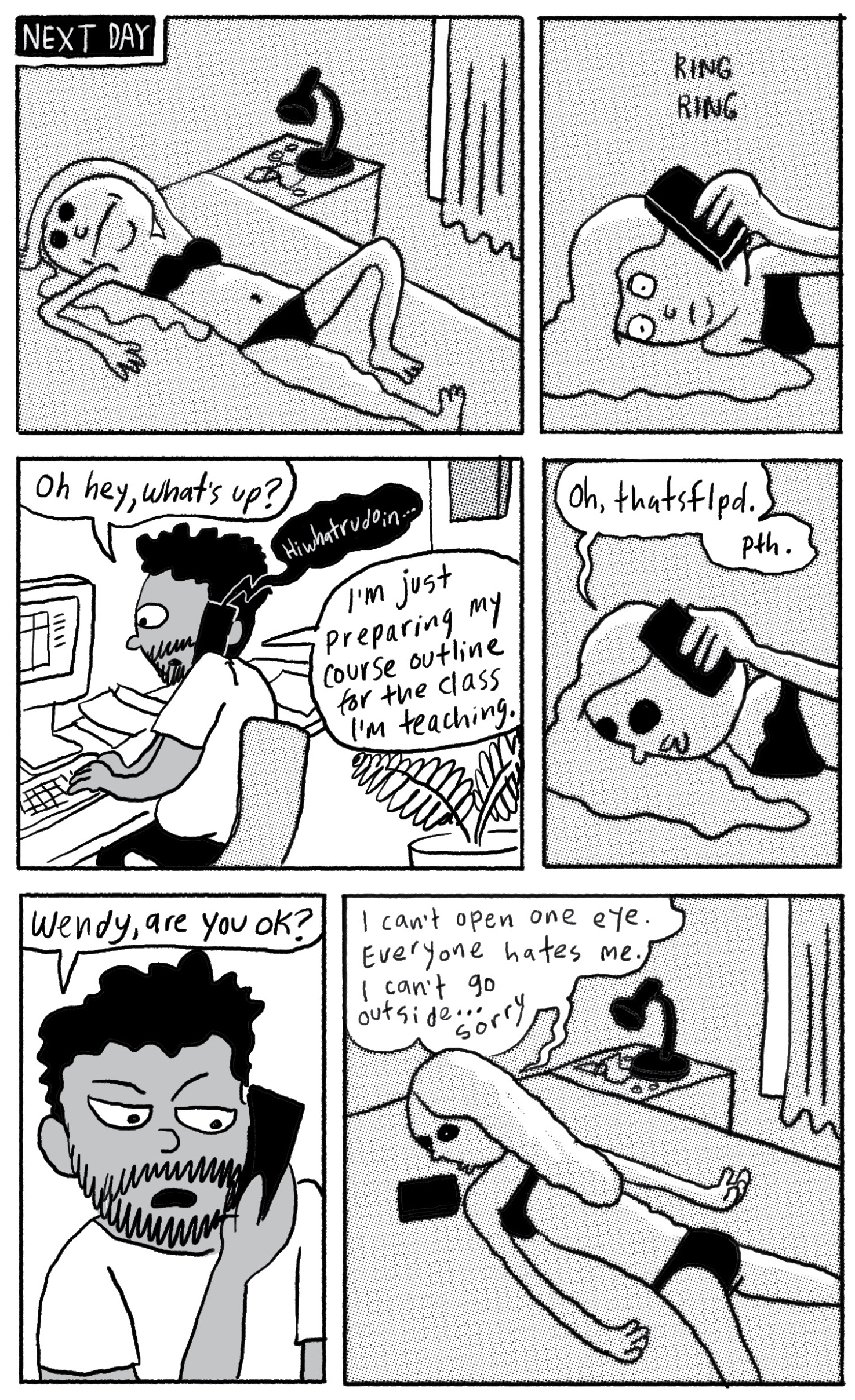
What sets Wendy: Master of Art apart is that, for all its caricatured millennial tendencies (the wokeness, the polyamory cliché, the girl who seemingly feels she deserves a modicum of success yet isn’t quite sure what for), it’s so searingly realistic. Pretty much every page smacks you in the face with its often-ugly familiarity. While these familiarities are ballooned into caricatures of real life, so few comics artists (and even novelists) manage to tread the fine line between the comedic, the tragic and the pedestrian with such dexterity as Scott.
Much of the realness is down to the fact that while the reader will almost certainly like Wendy, she’s often not at all likeable. She’s mean to her earnest students, she’s visibly jealous of her peers, and there’s a palpable sense that the world owes her something for nothing. The world does not. It would be easy to find her irritating in real life for her combination of barely concealed neediness and frequent bouts of selfishness. But it is precisely these flaws that give her such a potent sense of humanity, and give her a certain familiarity. As the book closes, Wendy can be seen with her now-familiar panic-stricken face, glancing away from a laptop. “Are you Wendy?” she asks.
